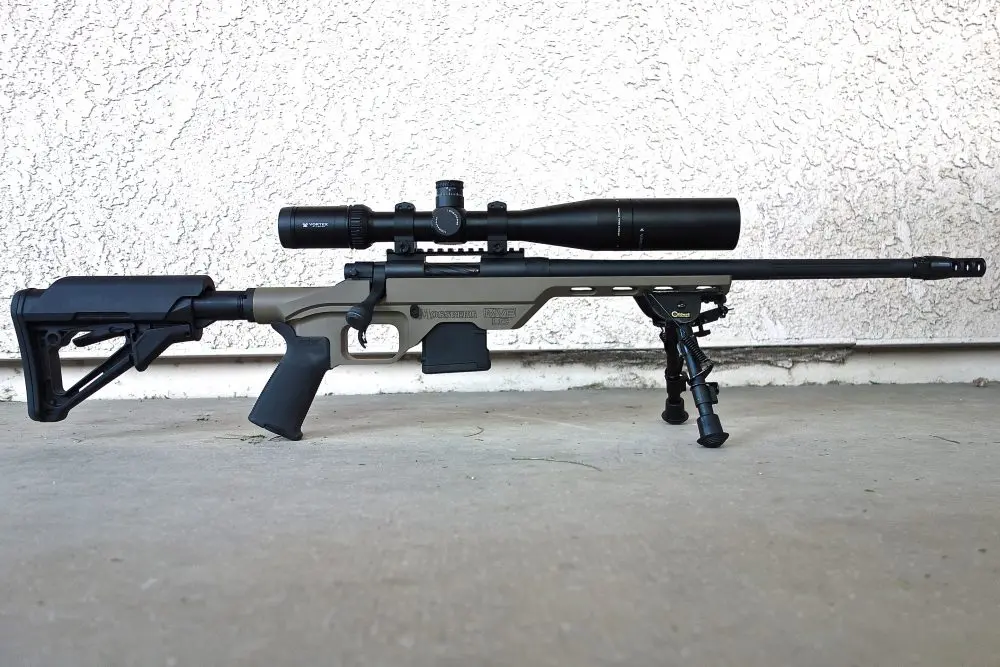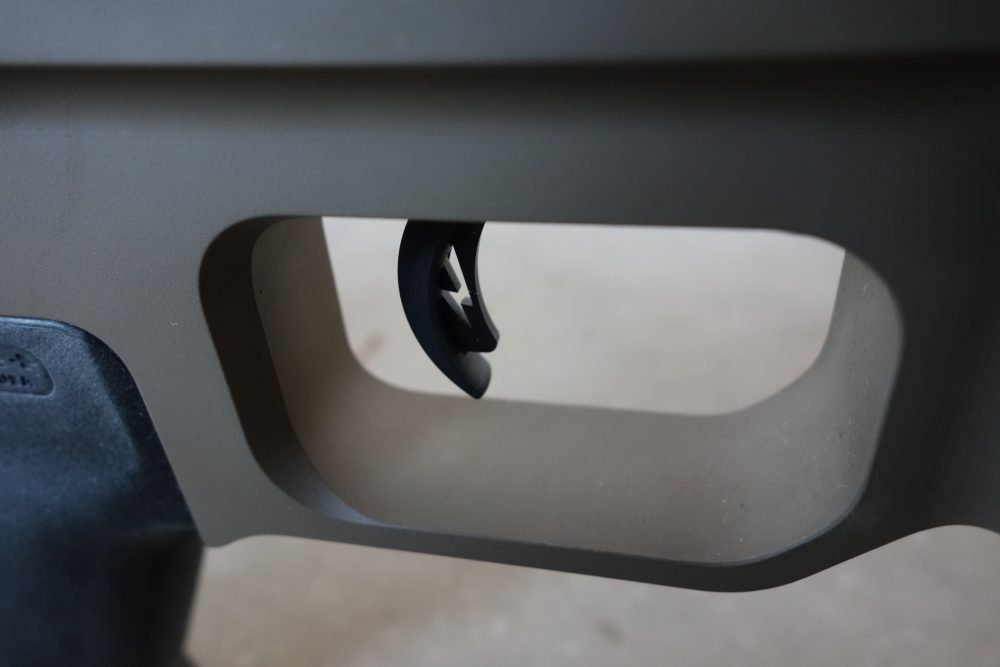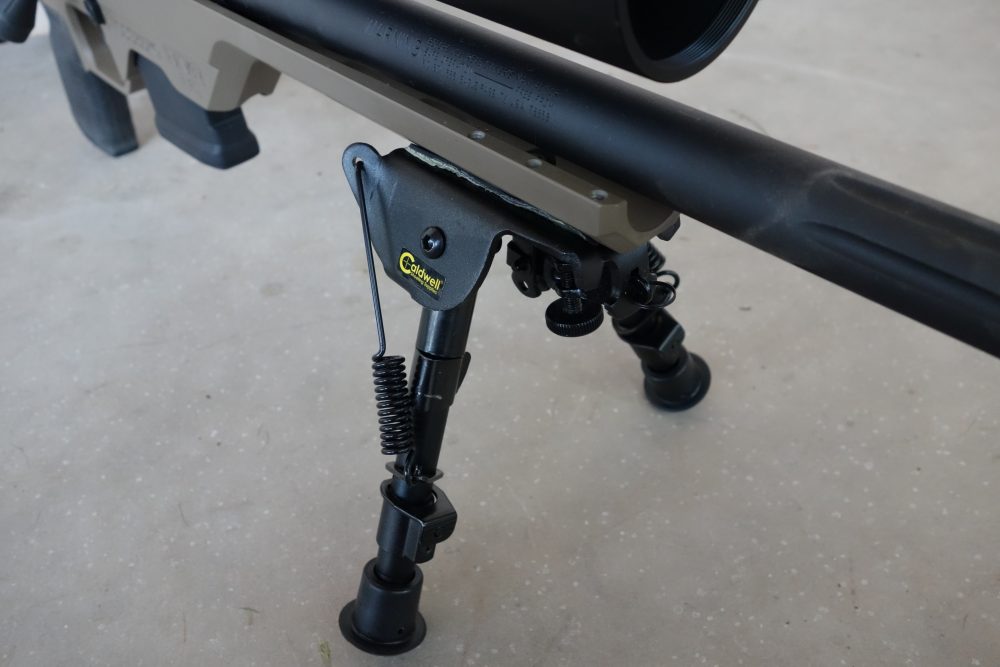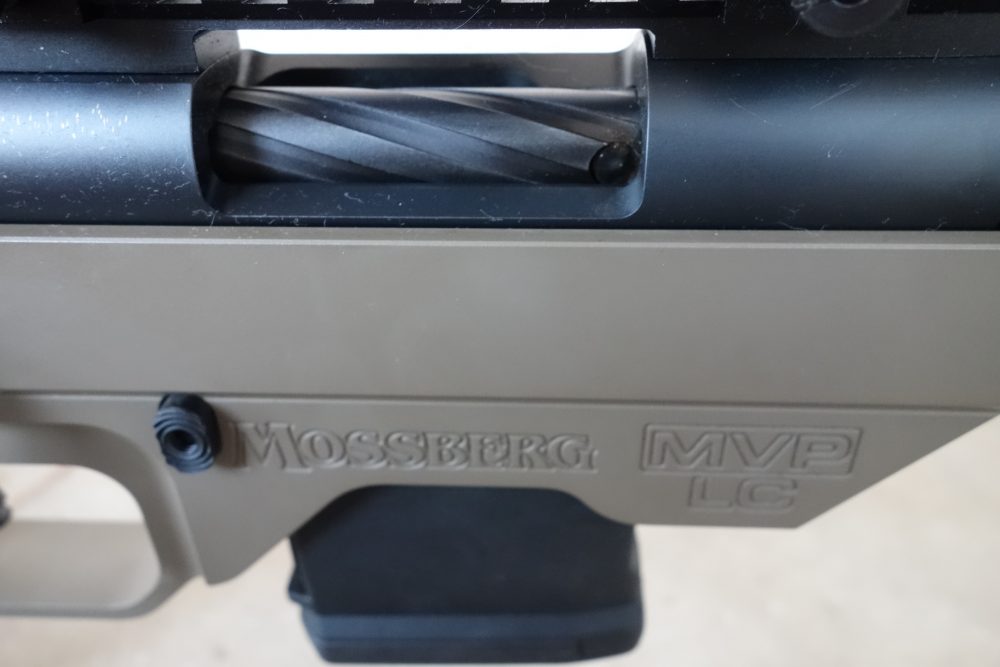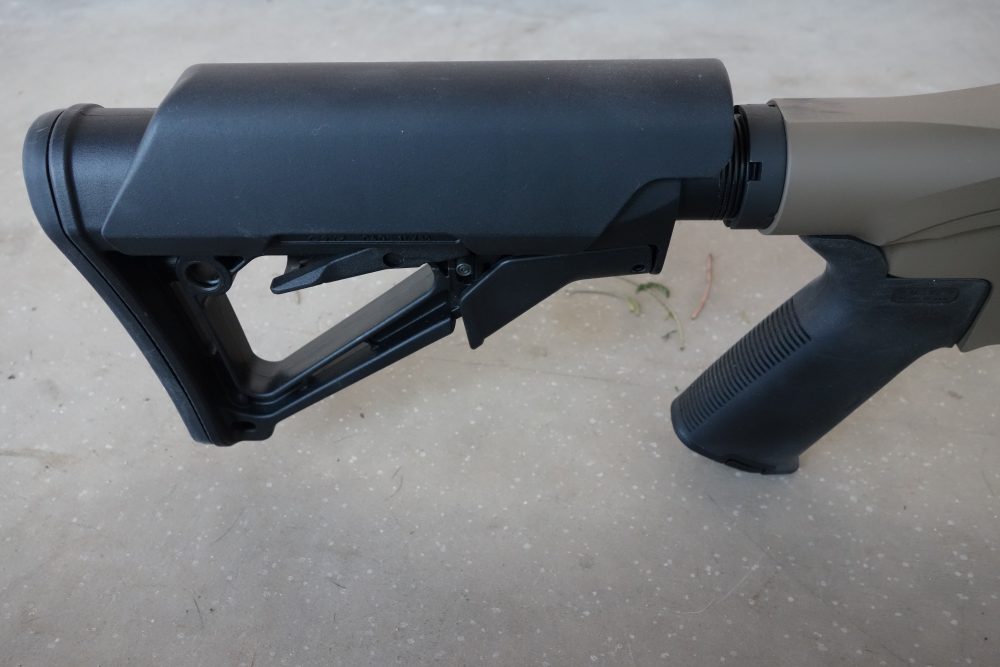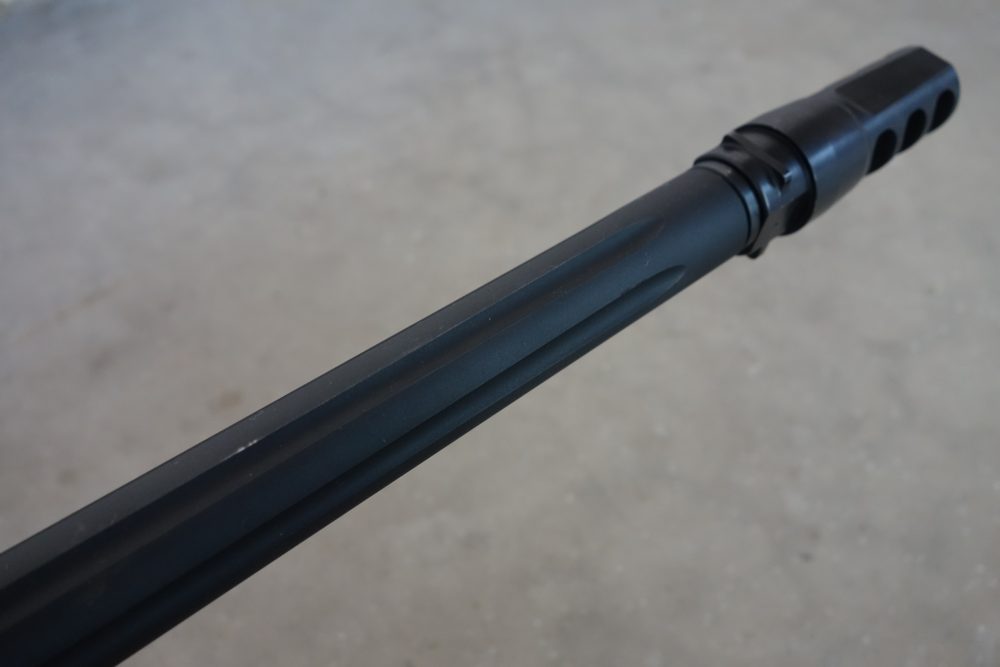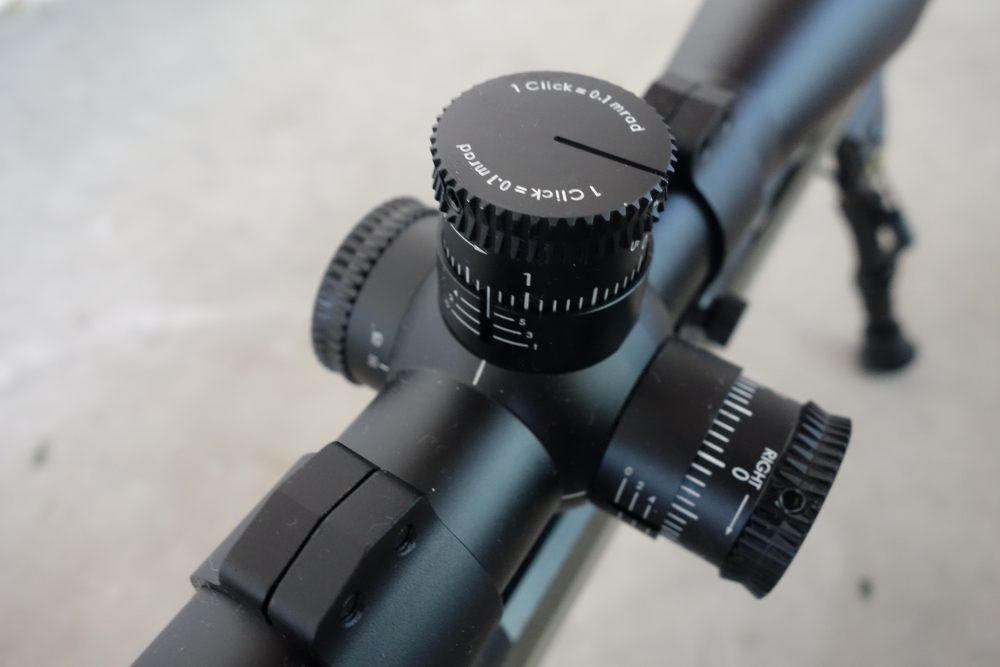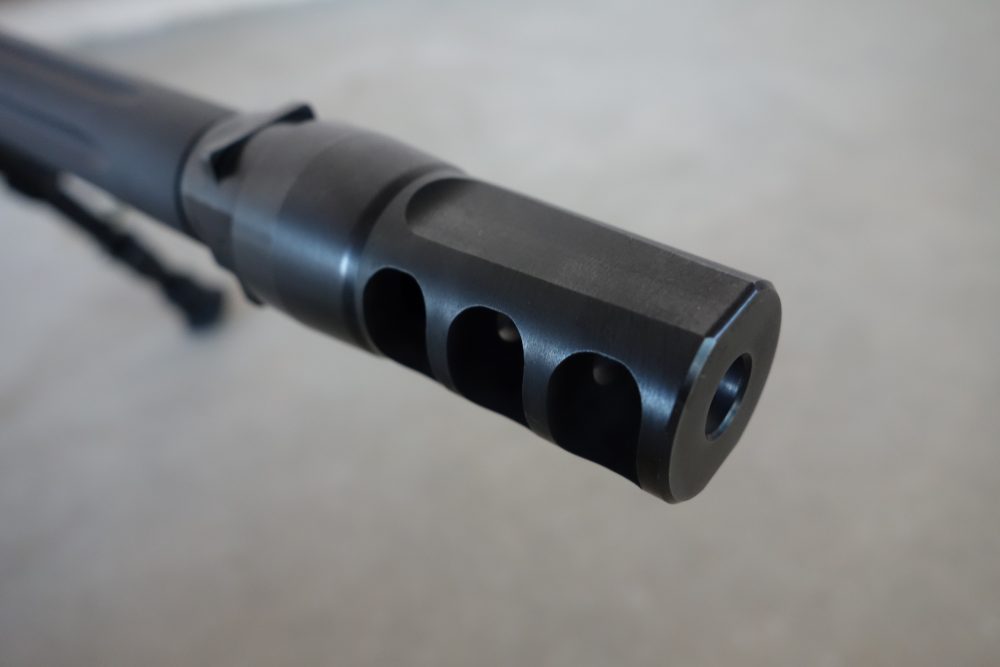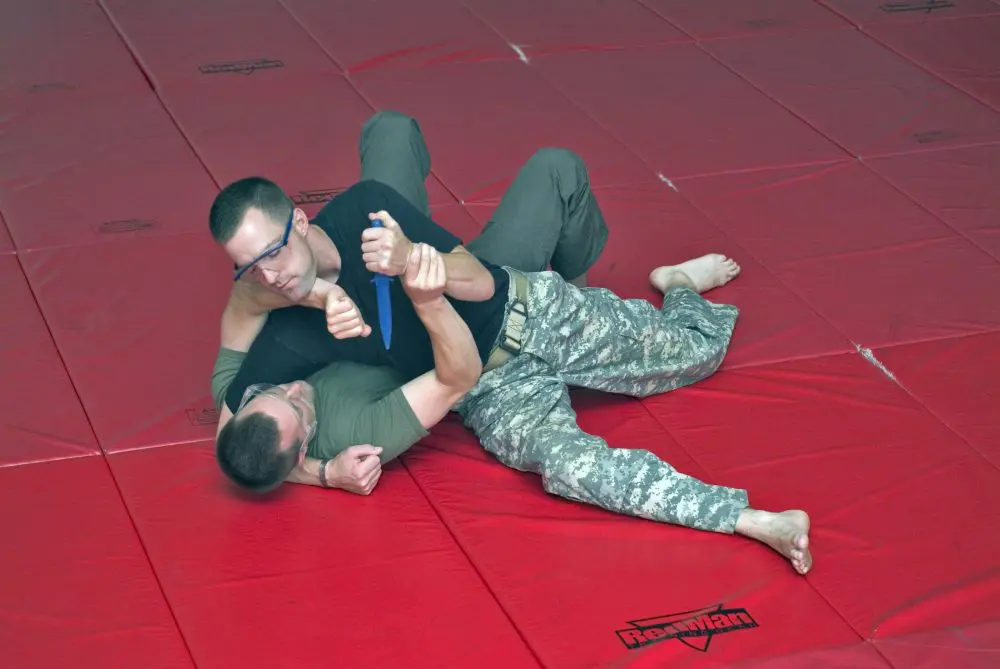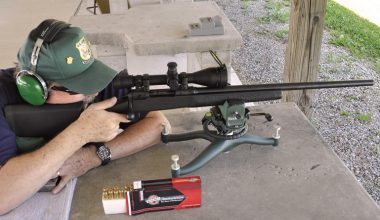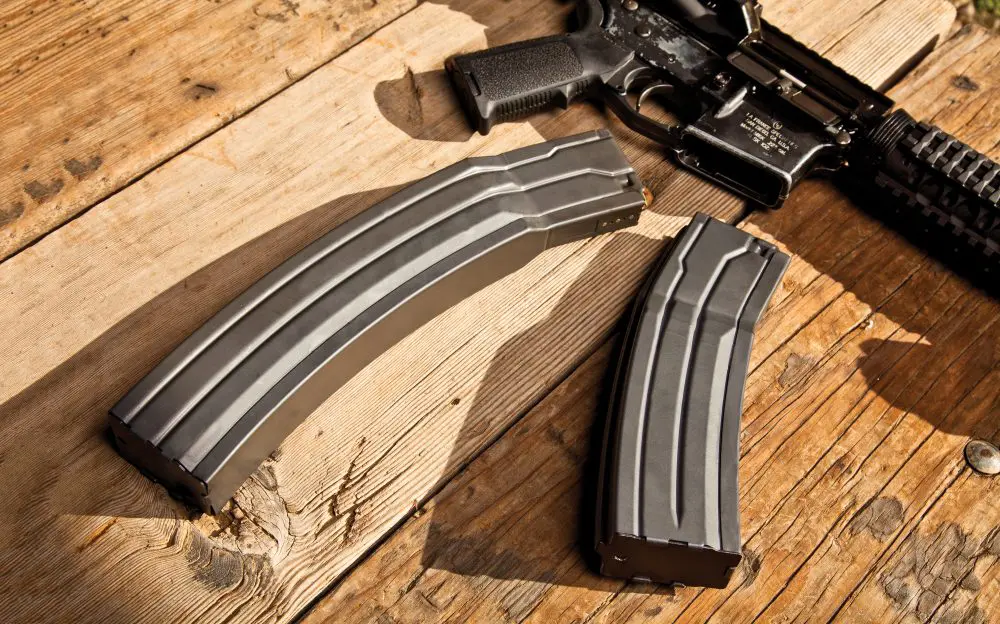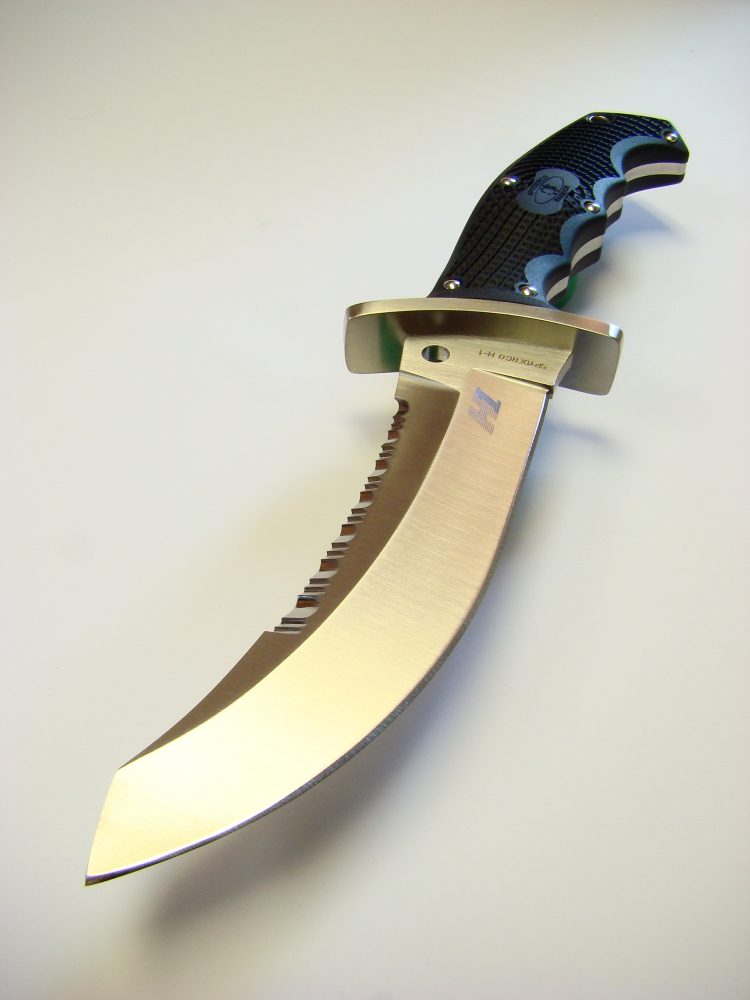Mossberg MVP Light Chassis rifle in 5.56x45mm.
In a market flooded with modern sporting rifles, bolt guns are sometimes relegated to the fringes. This is not necessarily without good reason.
True precision shooting is both a science and an art. For those who were not formally trained in this discipline, the prospect can be intimidating. There are complex mathematical formulas for everything from bullet drop to mil-ranging and the Coriolis Effect.
Then there is the seeming backpack full of accessories you may need, like wind meters, inclinometers, bubble-levels, tripods, bipods, and bean bags. A dozen popular manufacturers make scopes, several produce bipods, and so on. For beginners, the sheer volume of information and the intensity of the gear requirements can be overwhelming—and overpriced. A high-quality precision bolt rifle can start at $5000 without so much as a sling to go with it.
Mossberg, a company not typically known for bolt-action rifles, understands this dilemma and has seized the opportunity to assemble a ready-to-shoot bolt-gun package that offers incredible value on the dollar for those looking to get their foot in the door—or behind the bench.
Mossberg’s trigger-in-a-trigger design makes it easy to pre-load the bang switch for precision shots.
Table of Contents
NEWEST MVP RIFLE
Mossberg introduced their MVP line of rifles several years ago and have steadily added to the product line with a number of configurations available in the two most popular American rifle calibers: .308 and .223.
The most recent complement to the line is the MVP-LC, or Light Chassis rifle. These are, as the name implies, lightweight bolt guns of a thoroughly modern design, with an eye toward modularity and an impressive list of features for their price point. The MVP-LC is offered in both .223 and .308, with the test gun being chambered in the former.
Two configurations are available for purchase. The first is the standalone rifle, which comes standard with Picatinny scope rail and bipod for around $1200—not cheap, but quite reasonable considering the average price bracket for guns of this type.
The second is a rifle/optics combo package with a pre-mounted Vortex optic, the Viper 4-16X HS-T, a second-focal-plane scope with tactical-style MRAD turrets and a corresponding drop-compensated reticle. This combo carries a suggested retail just below $2,000, making it well within the grasp of anybody who can afford a quality AR-15.
The rifle itself seems to have taken some serious design cues from the recent SOCOM sniper rifle contract bid. Its chassis is minimalist, modular, and skeletonized. The 16-inch barrel is free-floated, of medium contour and fluted along roughly half its length. The 1:7 twist will tend to favor heavier slugs.
Its short forearm is not necessarily ideal for field shooting, but I was able to run it off hand using both a magwell grip and using the bipod legs as a forward grip.
Another great feature is that it comes tipped with a Silencerco Saker Trifecta muzzle brake. Not only will this minimize recoil, but it doubles as a quick-mount for Silencerco cans, making this gun suppressor-ready out of the box.
All together, the MVP-LC with bipod and mounted Vortex HST comes in at a diminutive ten pounds, which is easily managed in the field.
Sixteen-inch barrel is free-floated in skeleton chassis. Bipod comes standard from the factory.
MODULARITY
In the modularity department, the MVP-LC has gone out of its way to be customizable by the end user. With traditional rifle stocks, you get what you get for the most part. You may have the option of butt spacers to adjust length of pull, but otherwise you best choose your stock carefully.
On the MVP-LC, the stock and pistol grip are standard AR parts. The included furniture is Magpul—a safe and economical choice on the part of Mossberg. Should you desire something different, those parts are drop-in and require little more than a screwdriver and five minutes’ worth of elbow grease. The AR tube-style stock mount gives you plenty of adjustability for the whole family.
The .223 rifle even feeds from AR magazines, allowing some great cross-compatibility with their carbine. I’m a big believer that the fewer parts and accessories you have to keep on hand, the better.
What’s even more interesting is that the .308 version is capable of feeding from both M14 and LR-308/SR-25-style mags. Switching from one to the other requires you to remove the action from the chassis and adjust a fitting tab built into the bottom metal. We were assured that the shooter can easily do the switch. This very unique feature affords some opportunity to scavenge magazines, if that becomes necessary in a collapse of traditional supply means.
The slots in the chassis are not M-LOK spec, but multiple holes for sling studs are along the length of the 6 o’clock. The trigger is user adjustable from two to seven pounds by factory specs, and also requires the action to be removed. Ours came from the factory breaking at just over three pounds.
Bolt is spiral fluted—a premium feature usually reserved for more expensive rifles.
FROM THE BENCH
But all these great stats and features are of little impact if the rifle doesn’t perform. To be honest, I was wary when I sat down at the bench. After all, Mossberg is not a company built on its precision rifles.
Given the 5.56mm chamber, 16-inch barrel, and my own lack of formal training behind bolt guns, I wasn’t convinced I could get “precision” groups out of the LC. To give the MVP every chance to excel, I tested four bullet weights from some of today’s most accurate ammunition. All groups were shot at 100 yards, seated, off the bipod.
The first load tested was also the only non-match load: Hornady 55-grain boat-tail full metal jacket. While not designated as a match cartridge, Hornady’s tight QC and use of quality components produce cartridges of above-average accuracy in just about all their loadings. My best group with their 55-grain FMJBT—out of a box of “blem” ammo—was just under ¾ inch. This is with a flier. My first two rounds were touching, just under ¼ inch from center to center.
Buttstock and pistol grip are from Magpul but can be easily replaced with others of your choice.
Next up was the first of two loads from Black Hills. Their 52-grain open-tip match (OTM) is known for its excellent aerodynamics and is used by several authors I know as their standard for .223 accuracy testing. Shooting this round out of the MVP, I learned why. My first two rounds went through the same hole. I pulled the third one, opening up my group to just about one inch.
The second load from Black Hills was their 62-grain TSX, a solid copper projectile, also open-tipped. For those interested in a .223 round for defensive use, the TSX has shown excellent weight retention through intermediate barriers like auto glass and plywood. For me, the 100-yard groups held pretty steady around the one-inch mark. No stacked rounds or touching holes with this load, just evenly spaced one MOA lateral strings.
Similar past experience tells me I may have been slacking on trigger control (no pun intended), but sometimes a rifle just doesn’t like certain rounds as much as others.
The fourth and final load, Federal 77-grain Sierra MatchKing open tip, was the heaviest load tested. It also turned out the best overall group size at ½ inch for three rounds. Again, two rounds punched through the same hole, with one about ¼ inch to the right. While this group fell into my persistent “two-and-one” pattern, it was still the smallest margin of error out of the four rounds tested.
The 1:7 twist found in the MVP’s barrel typically tends to favor heavier bullets. This is partially why the military created its Mk 262 load with a 77-grain OTM projectile.
Forward half of LC’s barrel is lightly fluted, reducing weight.
IMPRESSIVE ACCURACY
Even within my own limitations as a marksman, this rifle still proved to be ½ MOA accurate, with three out of four loads stacking multiple rounds through one hole. I can say with confidence that this gun is absolutely ¼ MOA capable, even if I wasn’t able to get it there myself.
This level of accuracy out of a gun barely larger than an AR-15 is noteworthy. What I find even more impressive is that all these groups were shot with the scope’s out-of-the-box zero. I didn’t turn either adjustment knob a single click from the time I opened the box. Not only are you getting a rifle that’s quarter-inch capable, but when it shows up at your FFL, it’s already dialed in to do so.
Depending on your level of experience, this may not make a huge difference for you. I’ve lost an entire range day chasing a zero more than once and, for those who are just getting their feet wet with magnified optics, a dead-on factory zero can save a lot of time and frustration.
Vortex 4-16X optic is equipped with tactile, positive-click MRAD turrets.
CONSTRUCTIVE CRITICISM
Was there anything about the MVP Light Chassis I didn’t like? Two things, both having to do with the operation of the bolt itself, made me scratch my chin.
First, the bolt’s throw, or arc of travel, seemed to have two parts. Rotating the bolt handle halfway was buttery smooth and could be done with a flick of two fingers. But at said halfway point, the bolt hit a sort of wall, which had to be pushed through to completely unlock the action. It was still smooth but there was noticeably more resistance. I want to emphasize that the action was not gritty or scratchy, and the bolt did not hang up on anything. It was smooth all the way through. It just seemed to stack, like a double-action revolver trigger. I don’t have a whole lot of time behind bolt guns but had never experienced this before.
The second idiosyncrasy was that when I pulled the bolt all the way back, there was a very noticeable amount of play in the bolt. With the chamber completely open, I could wobble the bolt back and forth what seemed like a good ½ inch in any direction. When I cycled the gun dry the first couple of times, this gave me some serious concern. But in firing close to 200 rounds through the MVP-LC, it never once proved to be a problem.
I did not have any hang-ups or misfeeds of any type. I fed the rifle from its factory ten-round PMAG, a 30-round PMAG, and a 30-round USGI mag. And even running the bolt as fast and hard as I could, it never did anything but cycle smoothly every time. So while these two quirks gave me some pause, I do want to reiterate that they caused no problems whatsoever while testing the rifle.
Silencerco Saker Trifecta brake reduces already mild recoil and is suppressor ready.
THE BOTTOM LINE
The MVP-LC is not as tight or as smooth as a custom hand-lapped action, but it’s not competing at those price points either. The rifle was accurate. It went bang every time I pulled the trigger. And it was just plain fun to shoot.
Who is the MVP Light Chassis for? I would say anybody who’s in the market for an affordable, high-value rifle package and is working on a limited budget should give this rifle a very hard look.
I want to place particular emphasis on those who are newer to the long-range shooting disciplines. I think this package is a great starter kit for those who maybe don’t know what they don’t know yet when it comes to shopping for components.
Regardless of your knowledge or experience level, the Mossberg MVP-LC is a light, accurate bolt-action that won’t break the bank.
SOURCES
O.F. MOSSBERG & SONS, INC.
(203) 230-5300
www.mossberg.com
BLACK HILLS AMMUNITION
(605) 348-5150
www.black-hills.com
FEDERAL PREMIUM AMMUNITION
(800) 379-1732
www.federalpremium.com
HORNADY MFG. CO.
(800) 338-3220
www.hornady.com
MAGPUL INDUSTRIES CORP.
(877) 462-4785
www.magpul.com
VORTEX OPTICS
(800) 426-0048
www.vortexoptics.com
